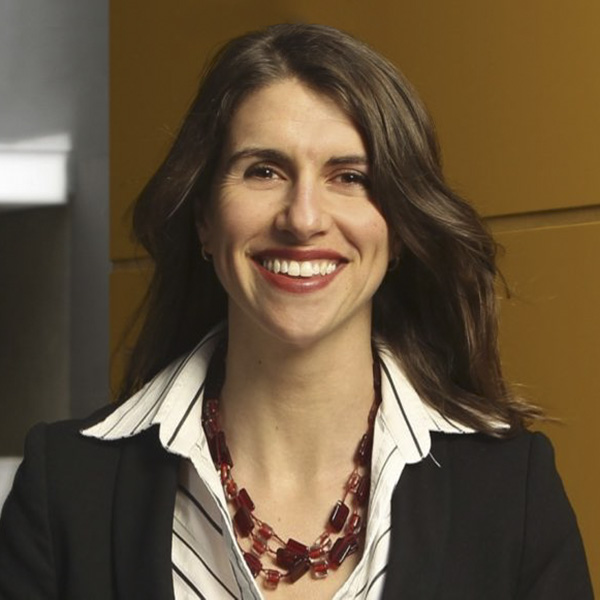ClimateWorks
Last Wednesday we were joined by ClimateWorks CEO Anna Skarbek. Her organisation has spent two years carefully plotting out updated paths to economy-wide decarbonisation in Australia, and Lighter Footprints members were lucky enough to get a breakdown of the results. Timely too – Anna and ClimateWorks believe the next decade is “make or break”, and that there are plenty of ‘shovel-ready’, low-carbon projects that can help Australia emerge from the pandemic.
Decarbonising our future
The Decarbonisation Futures report provides a sector-by-sector breakdown of how Australia can transition to a net-zero future. The great news is that we have all the technology we need to get to net-zero right now! The gap between our climate commitment and implementation can be bridged with an “all in” approach: policy, individuals, businesses and tech innovation all working together to the same goal. At the moment, only one or two of these levers are working together, hindering our progress. Which is a shame: looking at ClimateWorks’ years of work through a COVID lens, Anna feels the solutions in the report are perfect candidates for stimulus measures, and include many, many sustainable jobs.
Net-zero by 2050 isn’t controversial. All eight Australian states and territories have net-zero targets in place. 121 countries covering 25% of global emissions, a worldwide asset owner’s alliance worth US$4 trillion and some of Australia’s largest companies are on board. The co-benefits of a net-zero transition are huge, especially health-wise. Anna reflected that, given the evidence presented at the bushfires royal commission this week, Australia should be far more enthusiastic about decarbonisation and curbing health crises like this summer’s bushfire smoke and ongoing air pollution from fossil fuel use in cars and power stations.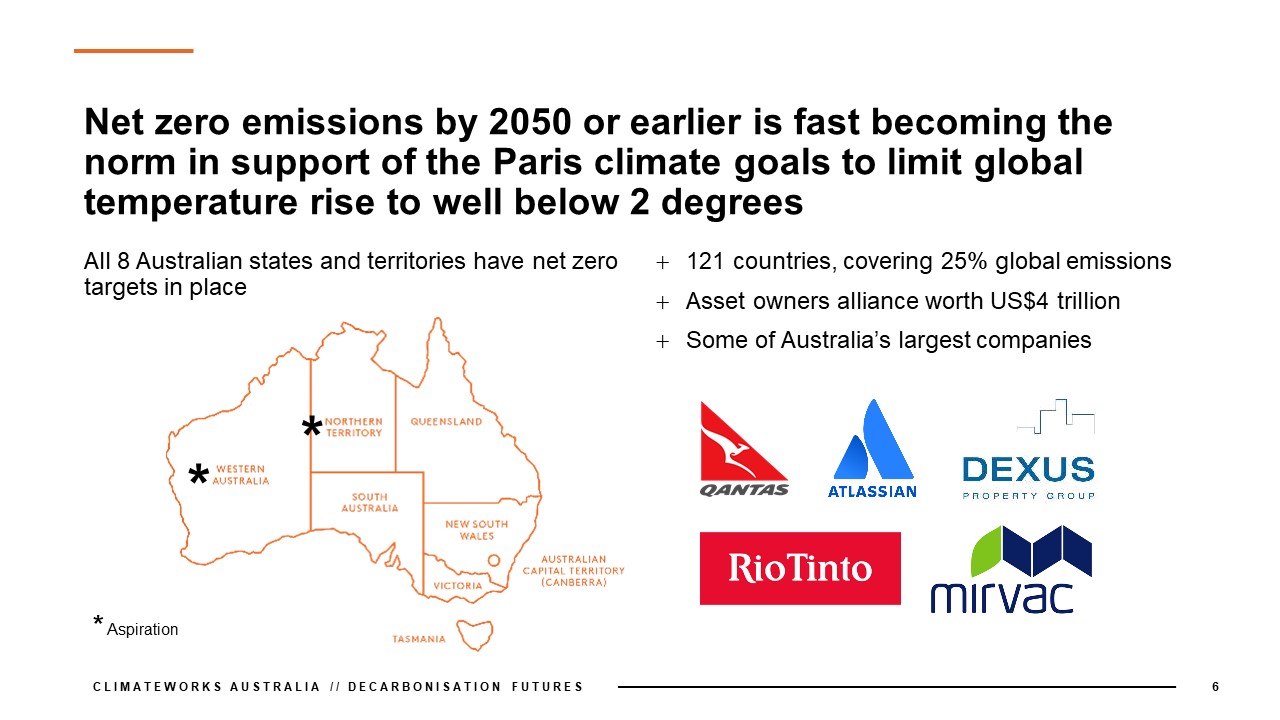
How to get to net zero
To get there, ClimateWorks argues Australia must immediately accelerate deployment of mature solutions and invest in emerging solutions in the hard-to-abate sectors. As already mentioned, these measures can also support a rebuild post-pandemic: creation of jobs, increasing economic resilience and decreasing energy costs. There’s so many projects across the economy, especially the transport, waste and agricultural sectors that are ready to go.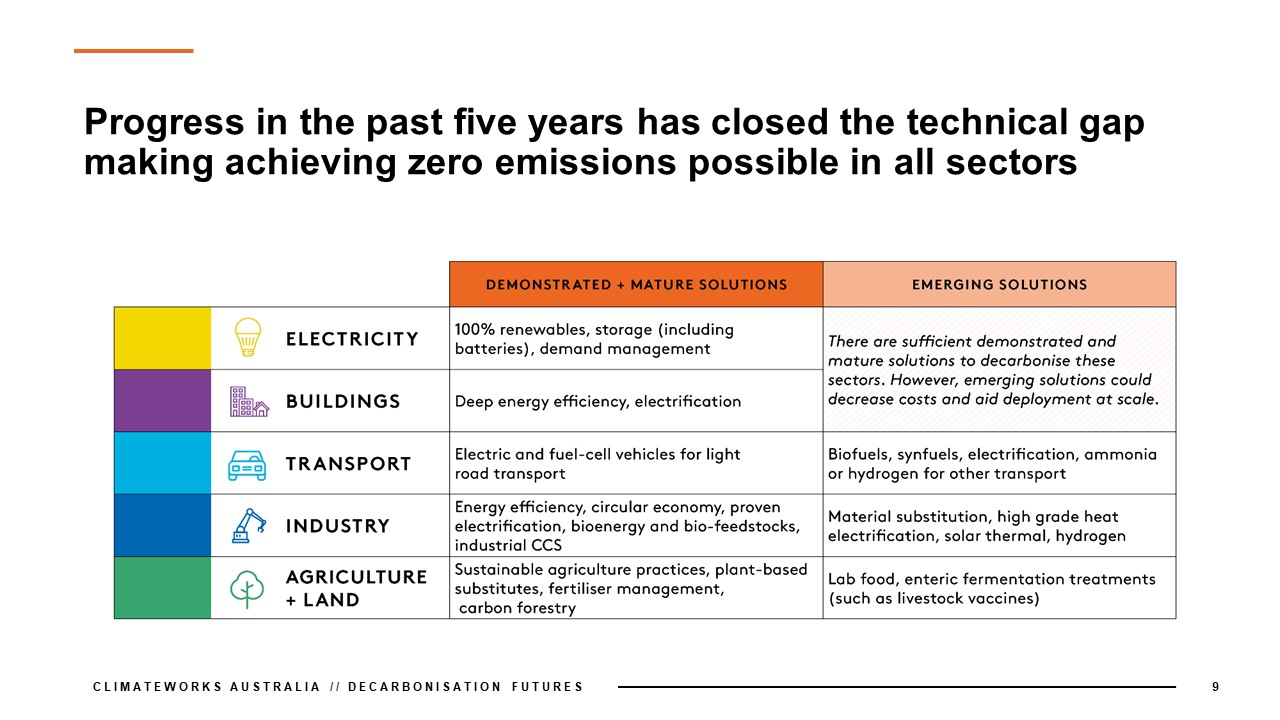
Huge potential
What’s also amazing is how much has changed in the time Anna and her colleagues last developed net zero emissions pathways for Australia in 2014. Plunging costs of batteries and new-build renewables, the rise of short-haul electric aviation, meat substitutes, the use of timber in multistory buildings – all these solutions have emerged in that time, some of them after the report’s launch earlier this year! Another big leap in the last five years has been the “EV horizon” – around one-third of all cars being electric – jumping forward a decade to 2030. All great stuff – but while the technical picture is rosy, the deployment scale is lacking and we need to start pressing the accelerator. Our carbon budget is shrinking and Anna warns we now have to rapidly decarbonise to stay within the limits.
Three scenarios
Decarbonisation Futures models three scenarios, each pulling the different levers (policy, tech innovation and businesses/individuals) to various extents. 2C DEPLOY pulls the policy lever strongest in a rapid roll-out of mature climate solutions. 2C INNOVATE focuses on investing in technological innovation and 1.5C ALL-IN features all three. Interestingly a shift to 100% renewable electricity is a core component of all three: in fact in the 2C DEPLOY and 1.5C ALL-IN scenarios a clean energy transition occurs by 2035 and helps encourage decarbonisation in other sectors. Check out the report for other similarities and differences between the scenarios.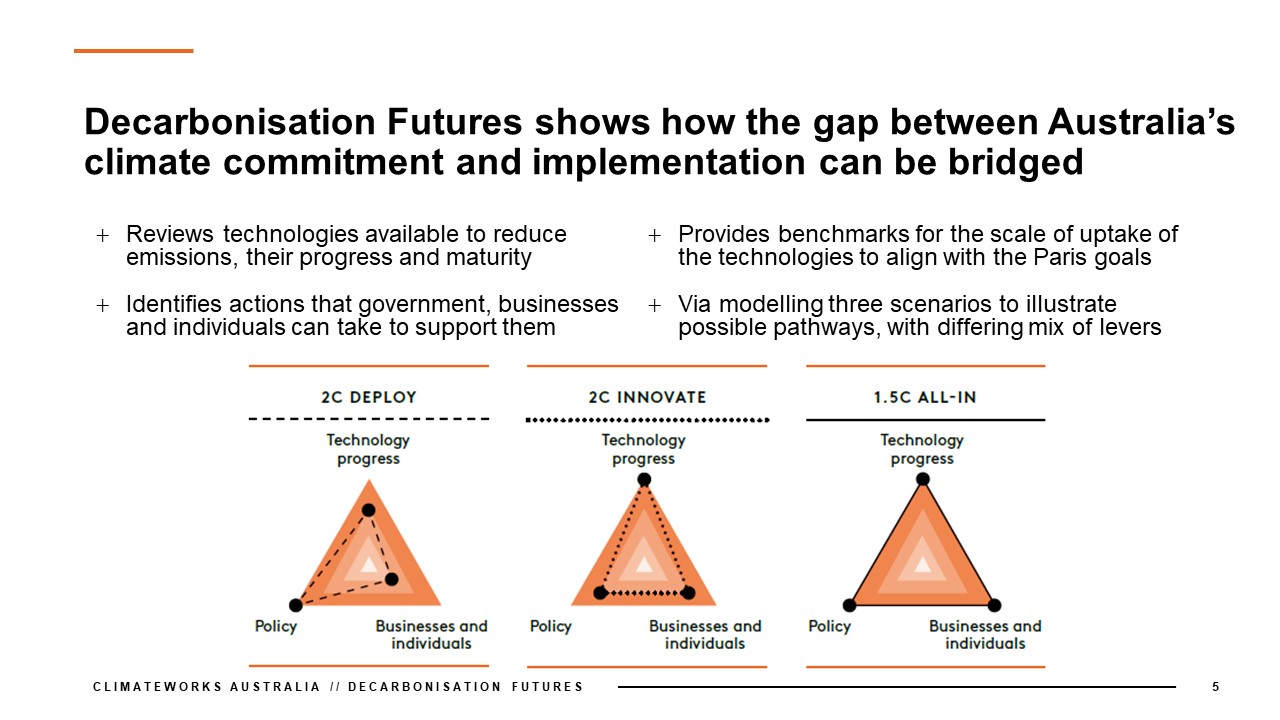
75% renewables by 2025
Electricity has to dive into decarbonisation early and hard. Which is very doable – our national electricity market operator is confident we can get to 75% renewables by 2025. The issues aren’t technical, instead market reform and upgrades to transmission infrastructure are holding us back. Renewable electricity and EVs are perfect examples of mature, ready-to-deploy solutions that can – and will – make a huge difference this decade.
Customer demand is a key player
And finally, some of the push will come from us as individuals and businesses. Demand for climate-friendly products comes from consumers and all forward-thinking businesses should be writing transition and decarbonisation into their business models. Governments and regulators should be supporting these moves with good policy. ClimateWorks’ research shows that we are only really “changing the equipment” of our economy, not reinventing the wheel. COVID has shown us we can pull out all the stops if we’re prepared to. In closing Anna urges us to help make this the “transformational decade” for climate action.
Questions and answers
Our Q&A segment dived into some details of the report’s key findings and wider questions:
The 100% renewable electricity scenarios are surprisingly similar. In all three we hit 75% by 2030, and in two we hit 100% by 2035. At best gas will be required as a peaking resource, but other (clean) firming technologies like pumped hydro, hydrogen and transmission upgrades could overtake the need for any fossil fuels.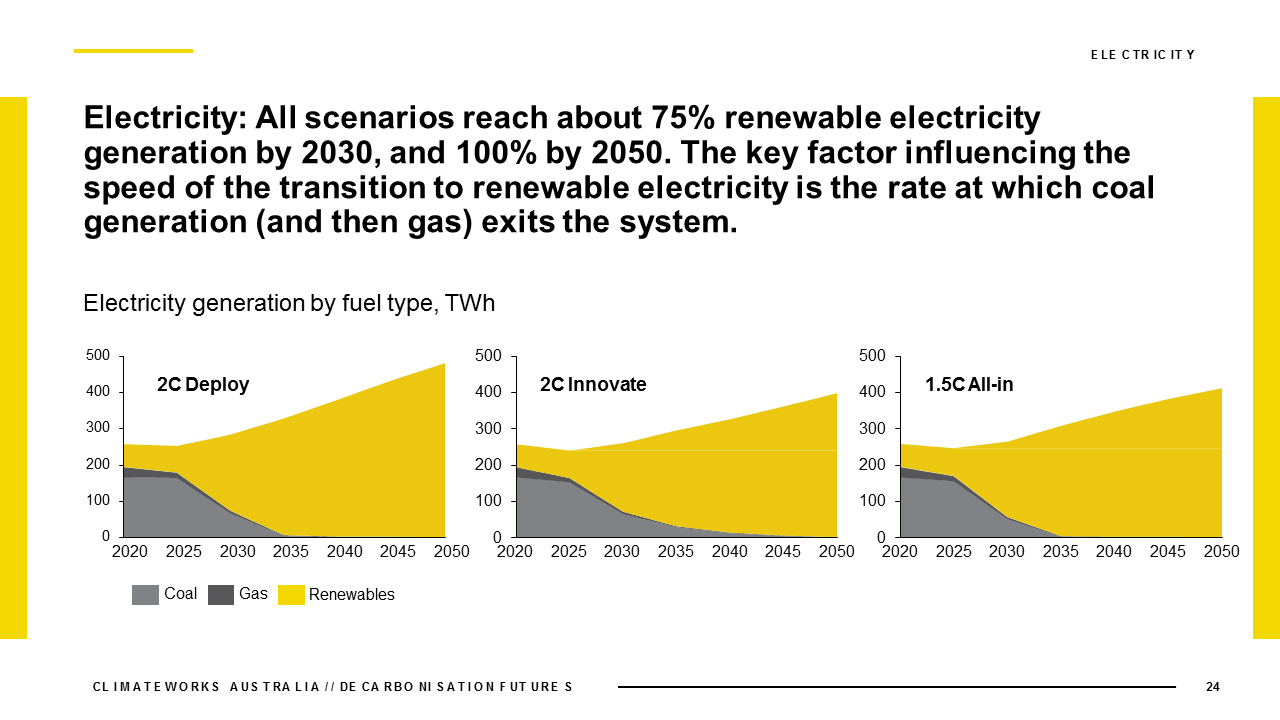
When asked about her level of concern around no government commitments to fund ARENA or moves to change the mandate of the CEFC, Anna was confident these agencies will be properly supported in the long-term: their work has been groundbreaking and they’re too crucial to Australia’s future to be sidelined. The change of mandate for the CEFC could actually be beneficial, expanding climate-friendly solutions outside the electricity industry (for example CCS in cement and chemical manufacturing – the only areas where CCS is showing some promise).
We also touched on the issue of possible government support for brown or blue hydrogen. Anna’s sure that export demands for clean, green hydrogen will see to this: building the industry to scale in Australia will inevitably mean exports are the key driver, and countries like Japan have indicated they will only import zero-emissions hydrogen.
Agriculture solutions for decarbonisation are a key part of ClimateWorks’ report. Reduction of methane emissions, increased soil health and moving away from industrial-scale monocultures are all mature, deployable solutions we are starting to move to at scale. As the vast majority of agriculture emissions are non-energy, research has been going on to possible solutions for quite a while, and we’ve got a huge suite to pick from.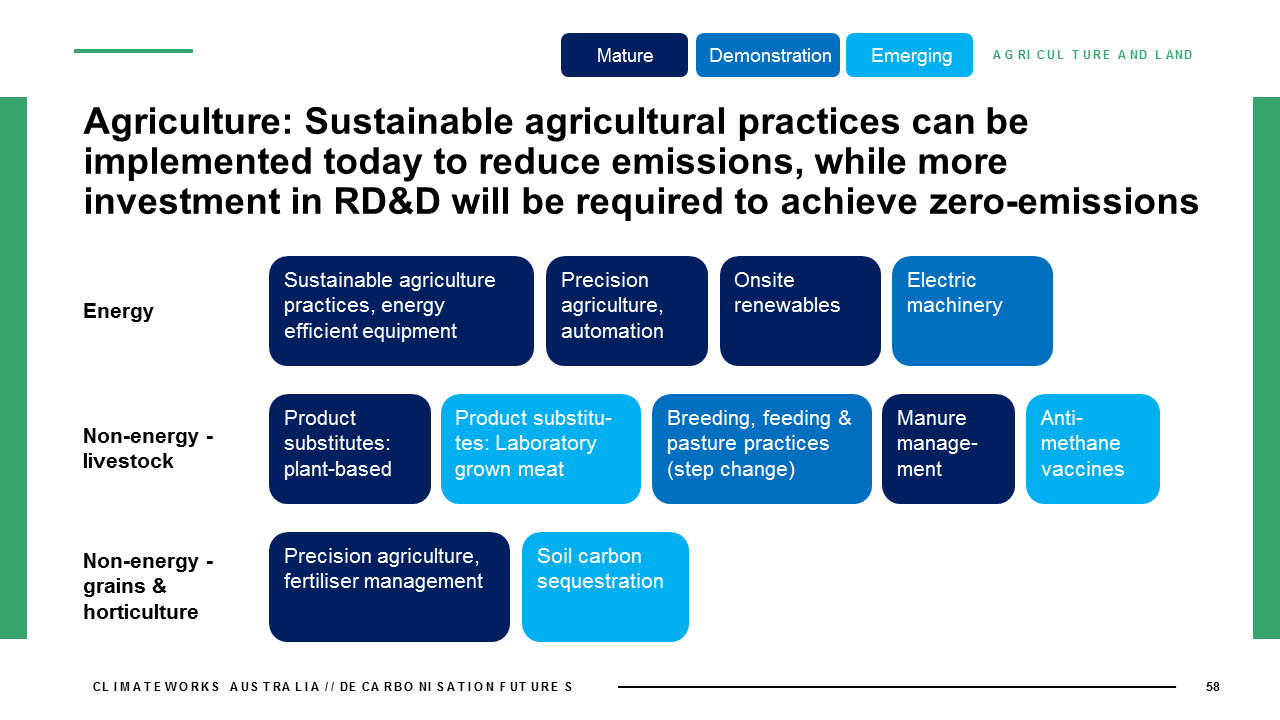
Deploying the already-mature solutions won’t upend the industry: in fact we can achieve a ~60% drop very quickly and across the two innovation-strong scenarios.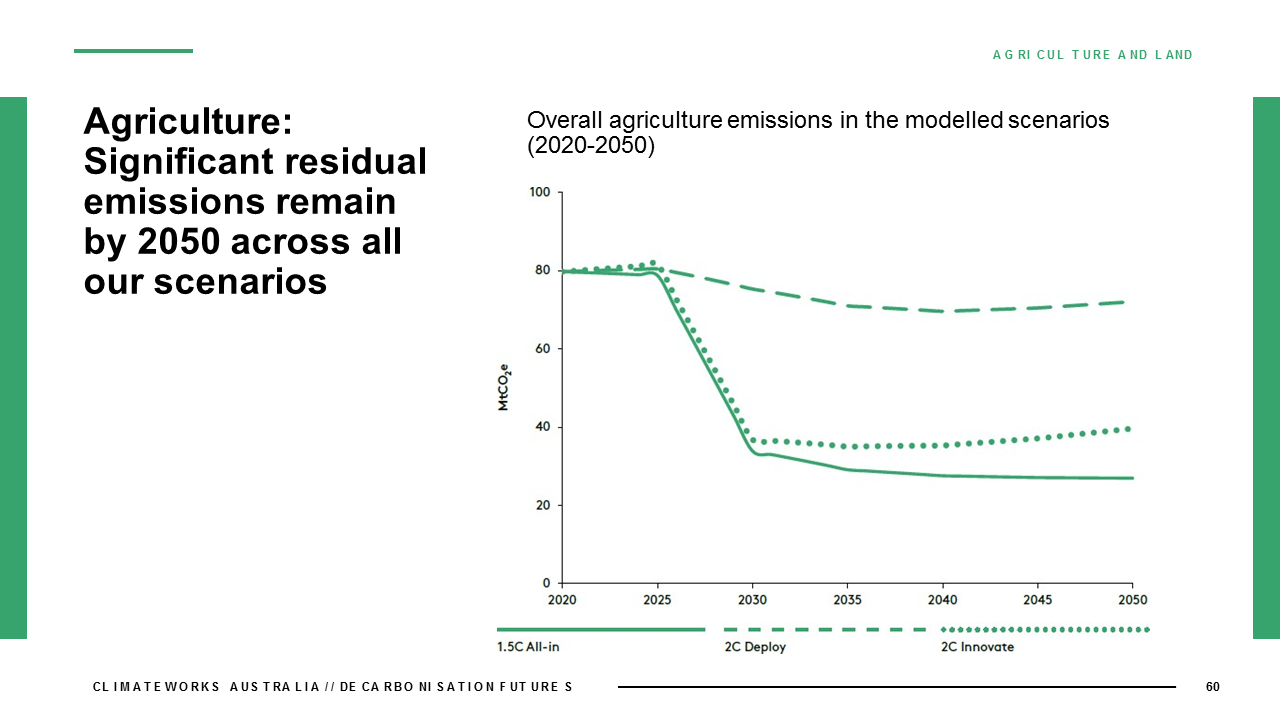
And finally, Anna and ClimateWorks forecast that carbon forestry will be a medium-term, gap-filling solution. While it can help us achieve net-zero emissions, its long-term viability as a decarbonisation solution faces challenges.
Missed it?
Relive the night via the Facebook Live recording (2nd half only, technical issues meant we had to restart the meeting), our Tweet String, Anna’s speaker slides or head to ClimateWorks’ resources page to get more detailed info on the report.
Thanks for reading and register now for our next event Communication success: engaging your MPs coming up on Wednesday 24 June.

